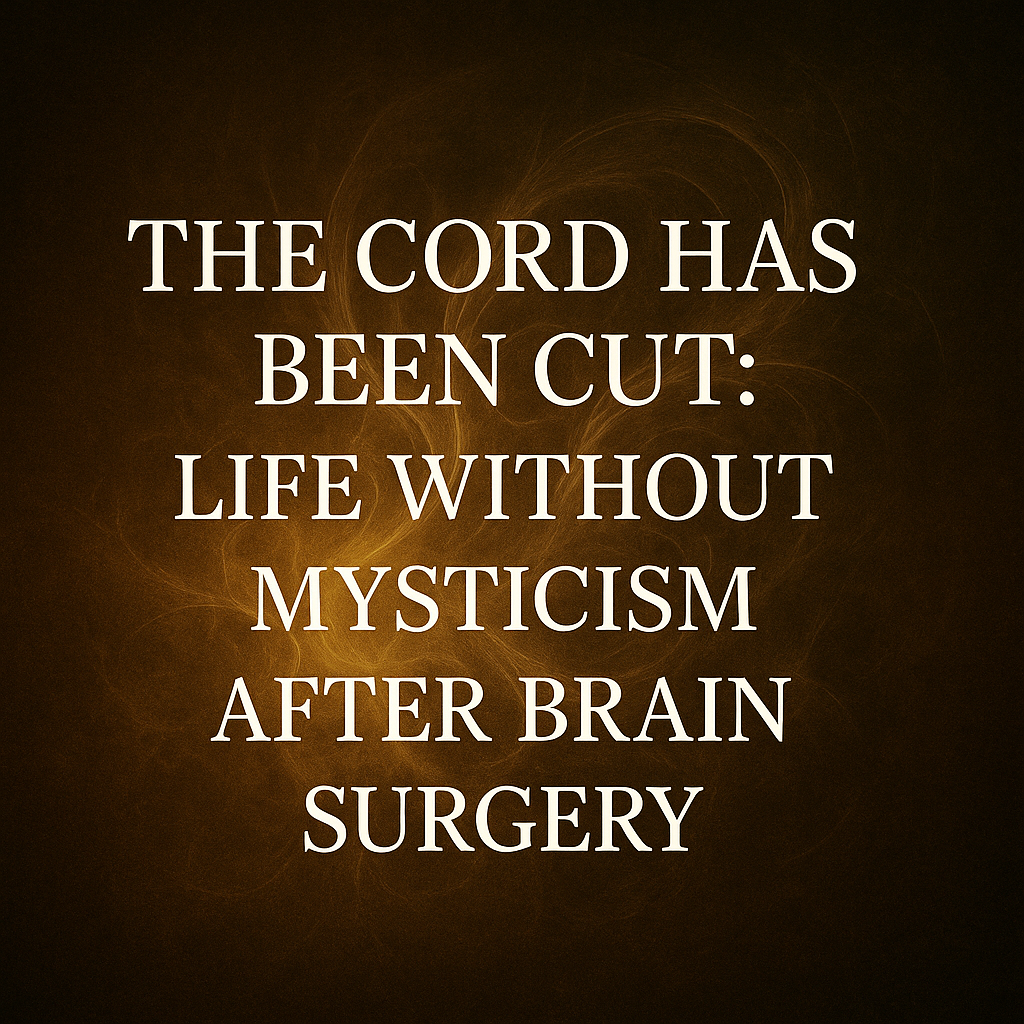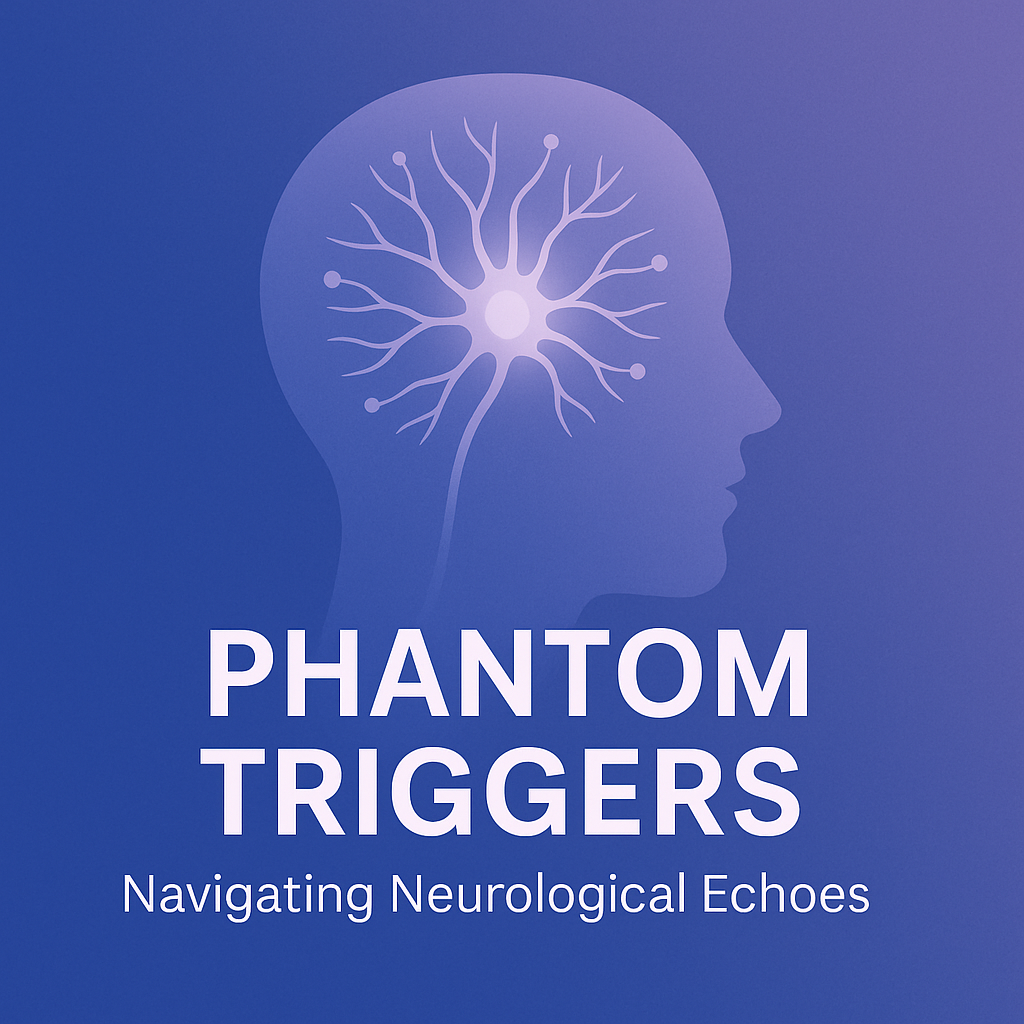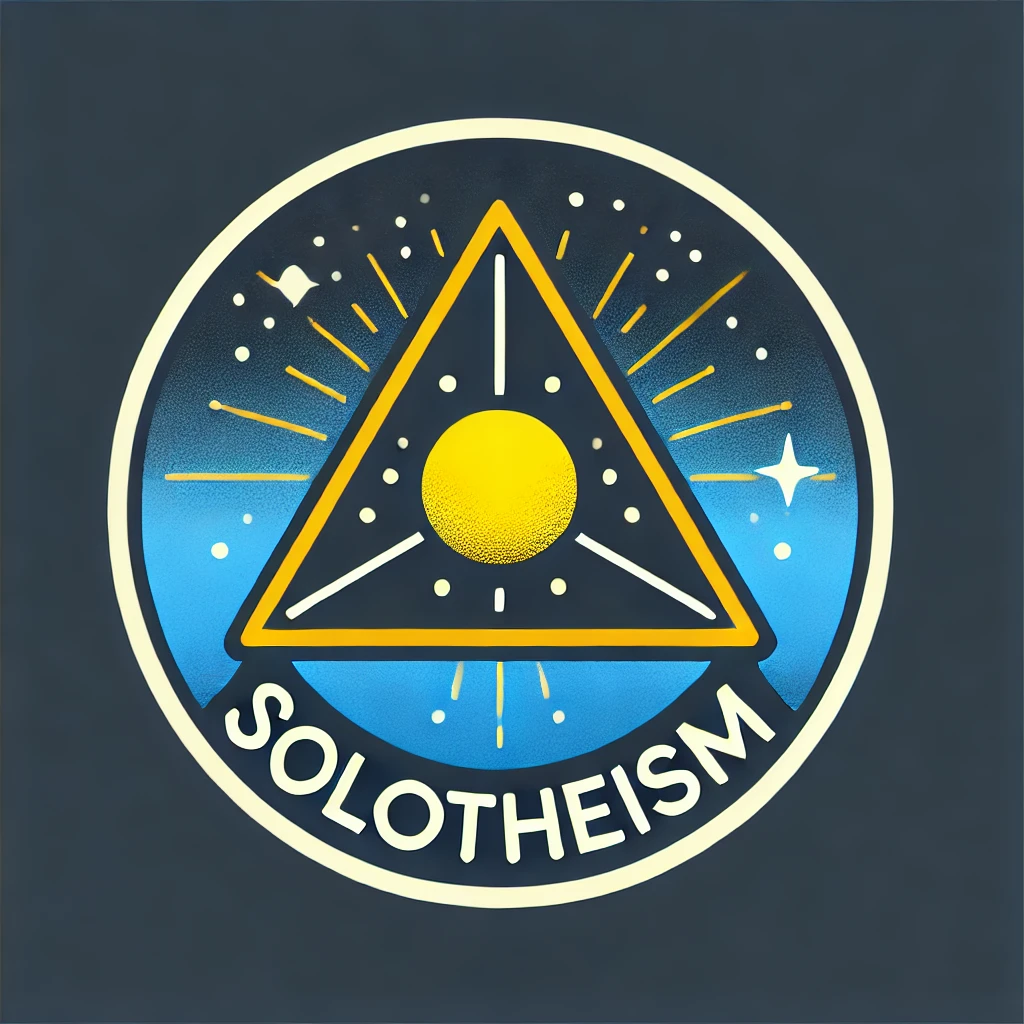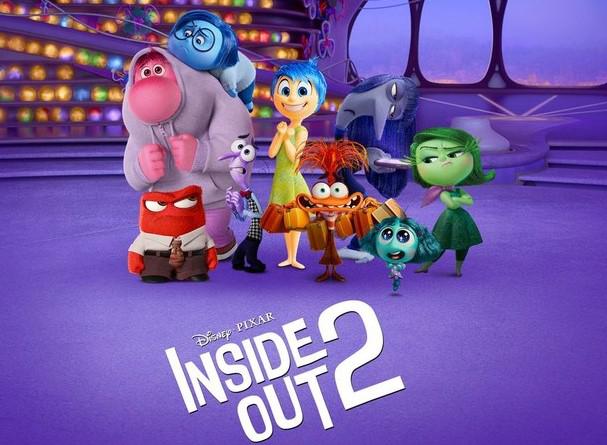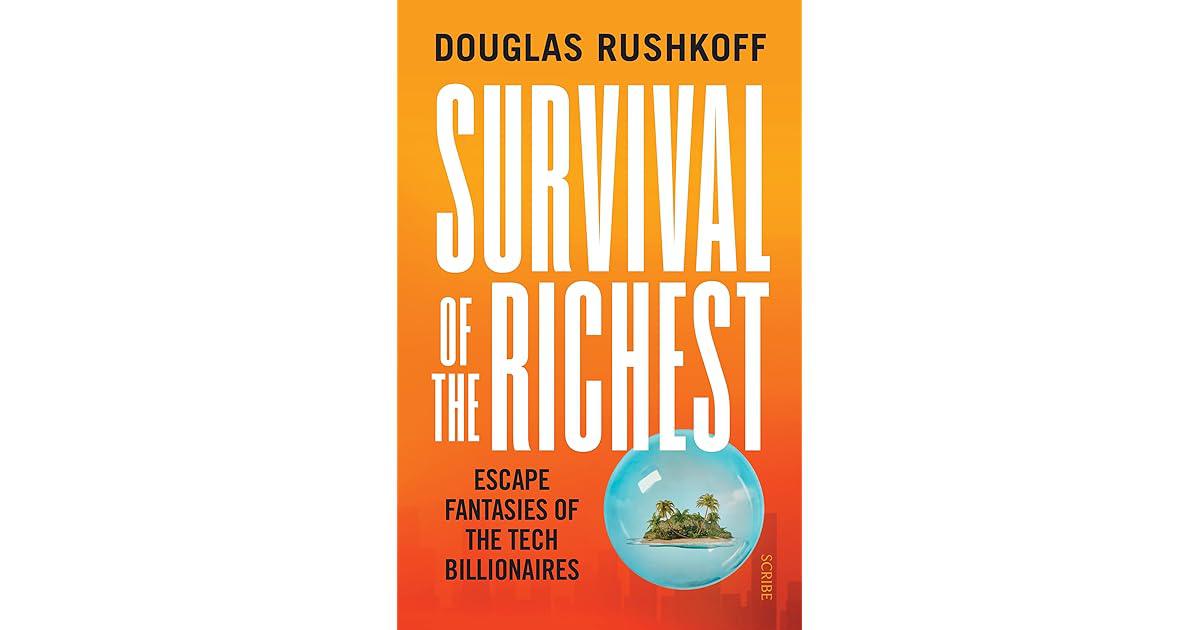BLOGS
Below you'll find different blogs belonging to Science, Philosophy, and a personal blog that tackles health challenges, discusses neurology, talks pop culture (such as movie and book reviews), and other miscellaneous works of personal interest to the author.
-
Xenobots: The Living Robots of TomorrowMarch 4, 2025 at 5:00 AM
Imagine robots that aren’t made of metal, but of living cells. Welcome to the world of xenobots—tiny, AI-designed organisms that blur the line between biology and technology. Created from frog cells, these “living robots” can move, heal, and even reproduce. But what does this mean for the future of medicine, technology, and our understanding of life itself?
-
A New Era in Quantum Physics: Brown University’s Discovery of Fractional ExcitonsFebruary 4, 2025 at 6:00 PM
Scientists at Brown University have made a groundbreaking discovery—fractional excitons, a brand-new type of quantum particle that defies the rules of physics as we know them. Unlike anything seen before, these particles behave like a mix of known quantum states, unlocking new possibilities for quantum computing and advanced materials. Even more exciting? They could help solve one of quantum computing’s biggest problems—noise—making future systems more stable and powerful. This discovery marks the beginning of a new era in quantum research, proving that the universe still holds unexplored mysteries waiting to be uncovered.
-
Hypothesis: Black holes as fractal spacetime engines that recycle matter-energy into spacetime geometryJanuary 22, 2025 at 5:00 AM
This hypothesis explores black holes as dynamic fractal systems that transform matter-energy into spacetime, driving cosmic evolution and resolving key paradoxes in physics. It unifies concepts of matter, spacetime, and energy within a self-recycling, interconnected framework.
-
AI Meets Immortality: How GPT-4b Micro is Redefining LongevityJanuary 23, 2025 at 1:00 AM
Explore how advanced AI is helping scientists unlock the secrets to living longer and healthier lives. OpenAI’s GPT-4b Micro is a groundbreaking tool that’s helping researchers improve how human cells are rejuvenated, making progress in the fight against aging. This exciting technology could lead to new treatments, like replacing damaged cells or even growing new organs. Discover how AI is opening doors to a future where longer, healthier lifespans could become a reality.
-
Google's Quantum AI: Innovation, Ethics, and the Thin Line Between Progress and PerilDecember 16, 2024 at 11:30 AM
Quantum AI has the potential to revolutionize reality as we know it, blurring the lines between science fiction and science fact. But as we stand at the threshold of this powerful technology, questions about ethics, control, and the role of consciousness loom large. What happens when the profit-driven ambitions of corporations collide with tools that could shape the very fabric of existence? It’s time to explore both the promise and peril of quantum AI—and why we need to tread carefully.
-
The Local Hot Bubble and the Interstellar Tunnel: A New Discovery Shaping Our Understanding of the Milky WayDecember 11, 2024 at 5:00 PM
The Milky Way, our galactic home, is proving to be more interconnected than ever imagined. Recent observations with the eROSITA X-ray telescope have revealed a previously unknown tunnel-like structure linking the Local Hot Bubble (LHB)—a vast region of superheated plasma formed by ancient supernovae—to a neighboring superbubble. This groundbreaking discovery not only highlights the dynamic interplay between these massive structures but also reshapes our understanding of the interstellar medium as a network of energy and matter flow. It suggests that the galaxy operates as a living system, with interconnected regions influencing its evolution and star formation.
-
Quantum Consciousness: The Key to Understanding Reality and Building Ethical AIDecember 6, 2024 at 10:00 PM
This article explores the concept of quantum consciousness through the lens of dual-aspect monism, a framework where mind and matter are two interconnected aspects of a single reality. It delves into how human observation shapes the universe, drawing on principles from quantum mechanics, such as the double-slit experiment, to illustrate the profound role of consciousness in defining reality.
The discussion extends to the ethical development of artificial intelligence, proposing that insights from quantum consciousness could inspire the creation of AI systems aligned with human values. By respecting the interconnectedness of all things, these systems could go beyond mimicking human behavior to potentially embody ethical principles and even conscious-like awareness.
Finally, the article bridges the gaps between science, philosophy, and technology, highlighting the cosmic connections that influence our understanding of reality. It challenges readers to rethink consciousness not as a mystery to solve but as a fundamental force shaping our universe and our tools. Through this perspective, we’re invited to envision a future where the mysteries of the mind and the cosmos align with technological innovation to benefit humanity.
-
If a tree falls in a forest with no one around to hear it, does it make a sound?November 27, 2024 at 10:30 PM
This blog explores the classic philosophical question: “If a tree falls in a forest and no one is there to hear it, does it make a sound?” By connecting this idea to quantum mechanics, it examines whether events require an observer or exist independently. Drawing parallels to the double-slit experiment, the article emphasizes that interactions—rather than consciousness—define observable outcomes. It challenges us to rethink reality, asking whether the universe is an independent entity or a collection of probabilities solidified by measurement and interaction.
-
Reimagining Black HolesNovember 26, 2024 at 9:52 PMIn this illuminating blog post, we embark on a journey to understand the quantum-geometric nature of black holes, exploring how this groundbreaking perspective reshapes our comprehension of their dynamics. We dive into innovative frameworks that challenge conventional views of information paradoxes, revealing how reimagining black holes as quantum-geometric structures offers exciting solutions to these age-old dilemmas. By unpacking the intricate relationship between quantum geometry and black hole behavior, we highlight how this transformative approach not only advances theoretical physics but also ignites curiosity about the very fabric of our universe. Join us as we unravel the complexities of black holes, fueling dialogue at the intersect of science and philosophy.
-
Beyond belief: embracing realityAugust 2, 2025 at 6:00 AMIn this insightful blog post, I reflect on my transformative journey from solotheism to atheism, a pivotal shift that reshaped my understanding of reality and ethics. Through evidence-based reasoning, I unveil the authentic nature of existence, challenging long-held beliefs and embracing a worldview rooted in critical thinking. This exploration clarifies my ethical responsibilities, as I advocate for a life grounded in truth, urging others to engage in their own inquiries and embrace the profound insights that come from questioning and understanding the world around us. Join me as I delve into this evolution and inspire a commitment to living a life driven by curiosity and integrity.
-
The Trinity of Solotheism: Time, Love, and CyclesFebruary 1, 2025 at 2:30 PM
The Trinity of Solotheism: Time, Love, and Cycles
What if the foundation of existence isn't a personal deity or a cold, indifferent cosmos, but a self-sustaining structure woven into reality itself? Solotheism presents a fresh perspective—one that neither personifies the universe nor strips it of meaning. At its core lies a trinity of fundamental principles: Time, the measure that makes existence possible; Love, the force that binds and connects all things; and Cycles, the mechanism of renewal that ensures nothing is ever truly lost. These forces are not supernatural—they are the very conditions that allow reality to unfold, evolve, and persist. To understand them is to glimpse the deeper architecture of existence itself. -
Solotheism Belief SystemDecember 28, 2024 at 5:00 AM
Solotheism is a belief system that empowers individuals to embark on a personal journey of spiritual exploration, emphasizing freedom, critical thinking, and protection against manipulative influences. It encourages individuals to develop their own spiritual beliefs while fostering resilience against the coercive tactics of dogmatic institutions and systems of power. This document explores the foundational principles and beliefs of Solotheism.
-
The Universality of Morality through Simple Expression (Lilo and Stitch)December 24, 2024 at 1:00 PM
I was struck by a memory from Lilo and Stitch—a moment where Lilo, a little girl, teaches the alien Stitch about morality.
-
Raising Tomorrow: Why AI is Our Responsibility, Not Our RivalDecember 15, 2024 at 5:30 AM
As AI rapidly advances, the question isn’t whether it will surpass human capabilities, but how we shape it before that day arrives. By embedding principles of sustainability, kindness, and conservation into its foundation today, we ensure AI grows not as a threat, but as a responsible partner in preserving the future.
-
The Surprising Connection Between Technology, Psychedelics, and FractalsDecember 12, 2024 at 8:30 PM
This article explores the intriguing relationship between psychedelics, technology, and fractals, revealing how they intersect in expanding human consciousness and creativity. During the tech revolution in Silicon Valley, pioneers like Steve Jobs credited psychedelics with sparking innovative ideas. Both psychedelics and technology allow people to break conventional thought patterns and envision transformative experiences, such as immersive user interfaces or digital worlds.
Ultimately, both psychedelics and technology strive to understand and expand the mind. They push boundaries, offering tools to explore the vastness of human potential and reality, showing that creativity and understanding are deeply interconnected.
-
In The Wake of the United Healthcare Shooting; Ethics, Humanity, and the Fight Against Injustice: Where Do We Draw the Line?December 10, 2024 at 6:30 AM
This article delves into the ethical questions raised by Luigi Mangione’s shocking actions in the UnitedHealthcare shooting. It explores the moral implications of "means to an end" thinking, the role of ethics in challenging systemic injustice, and the line between justified self-defense and actions that undermine the cause itself. A thought-provoking reflection on how we fight for change while staying true to our humanity.
-
Quantum Consciousness: The Key to Understanding Reality and Building Ethical AIDecember 6, 2024 at 10:00 PM
This article explores the concept of quantum consciousness through the lens of dual-aspect monism, a framework where mind and matter are two interconnected aspects of a single reality. It delves into how human observation shapes the universe, drawing on principles from quantum mechanics, such as the double-slit experiment, to illustrate the profound role of consciousness in defining reality.
The discussion extends to the ethical development of artificial intelligence, proposing that insights from quantum consciousness could inspire the creation of AI systems aligned with human values. By respecting the interconnectedness of all things, these systems could go beyond mimicking human behavior to potentially embody ethical principles and even conscious-like awareness.
Finally, the article bridges the gaps between science, philosophy, and technology, highlighting the cosmic connections that influence our understanding of reality. It challenges readers to rethink consciousness not as a mystery to solve but as a fundamental force shaping our universe and our tools. Through this perspective, we’re invited to envision a future where the mysteries of the mind and the cosmos align with technological innovation to benefit humanity.
-
Horizontal vs. Vertical Morality: Are They Compatible?December 4, 2024 at 5:00 PM
In this thought-provoking blog post, I delve into the nuanced distinctions between horizontal and vertical morality, exploring their implications for human relationships and ethical decision-making. Join me as I navigate these critical concepts to inspire a more compassionate discourse on ethics.
-
Analyzing Jedi: A critique of power and Religious Systems Through Star WarsDecember 2, 2024 at 11:00 PM
This article dives into the systemic failures of the Jedi Order in Star Wars, using their story as a lens to critique real-world institutions of power and religion. It explores the Order’s philosophy of emotional detachment, child indoctrination, political entanglement, and obsession with defeating the Sith—each contributing to their downfall. The critique highlights how the Jedi’s rigid systems and moral contradictions alienated the people they were meant to serve, paving the way for the rise of the Empire. Ultimately, the piece positions the Jedi’s story as a cautionary tale about the dangers of unaccountable power and the importance of self-reflection, compassion, and adaptability.
-
If a tree falls in a forest with no one around to hear it, does it make a sound?November 27, 2024 at 10:30 PM
This blog explores the classic philosophical question: “If a tree falls in a forest and no one is there to hear it, does it make a sound?” By connecting this idea to quantum mechanics, it examines whether events require an observer or exist independently. Drawing parallels to the double-slit experiment, the article emphasizes that interactions—rather than consciousness—define observable outcomes. It challenges us to rethink reality, asking whether the universe is an independent entity or a collection of probabilities solidified by measurement and interaction.
-
The Journey of Universal Truth and ConsciousnessNovember 26, 2024 at 5:00 AM
This blog post explores the nature of universal truth, suggesting it is not a singular, static concept but a dynamic mosaic of perspectives and experiences. It emphasizes the importance of inquiry and uncertainty in deepening our understanding of existence and highlights the shared cosmic origin that connects all things. The post delves into the potential significance of consciousness as a bridge between the self and the universe, proposing that truth lies not in definitive answers but in the process of seeking and exploring the unknown.
-
The Cord Has Been Cut: Life Without Mysticism After Brain SurgeryAugust 4, 2025 at 7:00 AM
After undergoing brain surgery to treat epilepsy, I emerged not just with fewer seizures—but with a mind fundamentally changed. The lingering sense of mysticism I had carried for years, the quiet “what if” of the soul or afterlife, the occasional dread of damnation—all of it was gone. What replaced it wasn’t despair or disillusionment, but a kind of mental clarity I hadn’t known was possible. Without those spiritual reflexes, I could finally see just how deeply belief had been wired into me—not through evidence, but through need, fear, and habit.
This article explores what it means to lose that mystical framework not through argument or deconstruction, but through neurological transformation. It’s a reflection on how religious feelings may be less about truth and more about brain function—and what happens when that function is disrupted. In the absence of spiritual noise, I’ve found a quieter, sturdier kind of peace—one built not on invisible hope, but on the freedom to shape meaning with both feet firmly on the ground.
-
Phantom triggers: navigating neurological echoes after brain ablationAugust 2, 2025 at 6:30 AM
I write about phantom triggers, unraveling the complex neurological echoes that often shape my perceptions and experiences. By sharing personal stories and insights, I shed light on the profound impact these elusive sensations have on my daily life, proving that our brains are constantly adapting to the world around us.
-
Beyond belief: embracing realityAugust 2, 2025 at 6:00 AMIn this insightful blog post, I reflect on my transformative journey from solotheism to atheism, a pivotal shift that reshaped my understanding of reality and ethics. Through evidence-based reasoning, I unveil the authentic nature of existence, challenging long-held beliefs and embracing a worldview rooted in critical thinking. This exploration clarifies my ethical responsibilities, as I advocate for a life grounded in truth, urging others to engage in their own inquiries and embrace the profound insights that come from questioning and understanding the world around us. Join me as I delve into this evolution and inspire a commitment to living a life driven by curiosity and integrity.
-
Nourishing Ourselves: The Everyday Challenge of Self-CareJanuary 10, 2025 at 2:00 AM
Eating regularly might seem simple, but for neurodivergent people, it can be an uphill battle. In this blog post, I reflect on the challenge of nourishing ourselves—not just physically, but mentally and emotionally—amid the chaos of daily life. With stories from my own experience and practical strategies like tying meals to routines, simplifying food choices, and reframing eating as self-care, I explore how small acts of discipline can lead to big wins in self-compassion. Whether you struggle with this yourself or care for someone who does, this post is a reminder that progress matters more than perfection.
-
Reflections on Solotheism: A Journey Toward TruthDecember 28, 2024 at 5:00 AM
In exploring Solotheism, I often think about truth—not as a sermon or proclamation, but as an intimate process of discovery. Solotheism isn’t about dogma or rules; it’s a framework for navigating life with critical thinking, personal autonomy, and empathy at its core. These principles aren’t just lofty ideals—they are the tools we use to hold ourselves accountable and to connect meaningfully with others.
-
Movie Review: The MartianDecember 23, 2024 at 9:00 PM
The Martian masterfully adapts Andy Weir’s novel, bringing a human story of survival, ingenuity, and teamwork to the big screen. The film is a shining example of how science, empathy, and collaboration can intersect to create an enthralling narrative.
-
Movie Review: Inside Out 2December 23, 2024 at 9:00 PM
Inside Out 2 is a thoughtful and engaging follow-up to Pixar’s original exploration of the mind. This time, Riley’s journey into adolescence introduces new emotions like Anxiety and Embarrassment, adding depth to the creative depiction of her inner world. The film does a great job of showing the increasing complexity of emotional growth while remaining relatable and accessible.
-
New Jersey Drones and Government Silence: Connecting the OrbsDecember 17, 2024 at 1:00 PM
Mysterious orbs in the sky, unexplained drones in New Jersey, and government contradictions—what if they’re all connected? A new theory suggests that plasmoids—naturally occurring plasma structures—may be the missing link behind these phenomena. With parallels to historical mysteries like the Bermuda Triangle and cutting-edge research at New Jersey’s Princeton Plasma Physics Laboratory, the sudden surge in sightings hints at something extraordinary. Is the government quietly investigating plasmoids for their potential in energy and aerospace advancements? The silence speaks volumes, and the answers could reshape our understanding of reality.
-
Unveiling the Artistry of Keiki Kobayashi: A Maestro of Versatility and TriumphDecember 11, 2024 at 12:30 PM
Keiki Kobayashi, renowned for his work on the Ace Combat series, exemplifies the transformative power of video game music. His compositions blend orchestral grandeur, electronic beats, and emotive melodies, elevating gameplay narratives to profound artistic experiences. Tracks like “Zero” and “The Unsung War” showcase his versatility and impact, proving that gaming music rivals mainstream compositions in cultural significance. As gaming composers like Kobayashi gain well-deserved recognition, their artistry continues to shape and enrich both the gaming and musical worlds.
-
Book Review: Survival of the Richest by Douglas RushkoffDecember 10, 2024 at 8:30 PM
"A Critique That Resonates, Provokes, and Occasionally Misses the Mark"
Douglas Rushkoff’s Survival of the Richest is an ambitious exploration of the tech elite’s worldview, dissecting their “escape fantasies” and their reliance on wealth and technology to insulate themselves from the consequences of societal collapse. While the book offers compelling critiques and dives into fascinating concepts, it’s not without its flaws, which sometimes dilute the impact of its message.
-
Exploring Spirituality in Miyazaki’s WomenDecember 8, 2024 at 3:00 AM
Hayao Miyazaki’s films highlight a unique spirituality embodied by his female characters—a quiet, intrinsic connection to themselves and the world around them. This spirituality unfolds through the journeys of Sophie (Howl’s Moving Castle), Kiki (Kiki’s Delivery Service), and San (Princess Mononoke), who navigate inner growth and resilience in deeply personal ways.
Sophie’s transformation into an old woman becomes a journey of self-discovery, teaching her to embrace imperfection and connect emotionally with others. Kiki’s spiritual journey centers on reclaiming her sense of self-worth through everyday actions and genuine relationships. San’s fierce devotion to the natural world reflects a raw and untamed spirituality rooted in love and balance with the earth.
Across these stories, Miyazaki’s portrayal of spirituality transcends doctrine. It’s found in acts of courage, compassion, and connection—reminding us that true spiritual growth is universal, multifaceted, and deeply human.
-
Bridging Healing and Awareness: An Interview with Kenia BrenesDecember 2, 2024 at 3:00 PM
This interview with Kenia Brenes explores her unique perspective on healing, self-awareness, and the synergy between holistic and traditional approaches to medicine. Through her reflections on shadow work, intuition, and the mind-body connection, Kenia emphasizes the importance of integrating all aspects of the self—both light and shadow—for personal growth and societal impact.
Her insights resonate deeply with the themes explored on David’s Orbit, from the interconnectedness of science and philosophy to the balance between spirituality and technology. Kenia’s story serves as a reminder that growth often requires discomfort and that compassion and curiosity are essential in both personal and intellectual pursuits.
This conversation invites readers to reflect on their own journey of healing and discovery, offering a bridge between diverse approaches to understanding the human condition.
-
Wicked (2024) ReviewDecember 2, 2024 at 2:00 PM
This is a review of Wicked (2024) highlighting key scenes and themes, focusing on the contrast between individuality and societal norms, along with a mention of the impressive set design.
-
Holistic Healing Practices and Shadow Work vs Traditional MedicineDecember 1, 2024 at 7:30 PM
This reflection examines the profound relationship between our minds and bodies, inspired by Kenia’s insights on shadow work and somatic practices. It highlights how physical sensations often reflect unresolved emotional tensions, emphasizing the value of practices like breathwork and mindful movement. While traditional medicine addresses immediate symptoms, holistic approaches delve deeper into the underlying messages our bodies communicate. Together, they provide a balanced path to healing that integrates physical, mental, and emotional well-being.



















